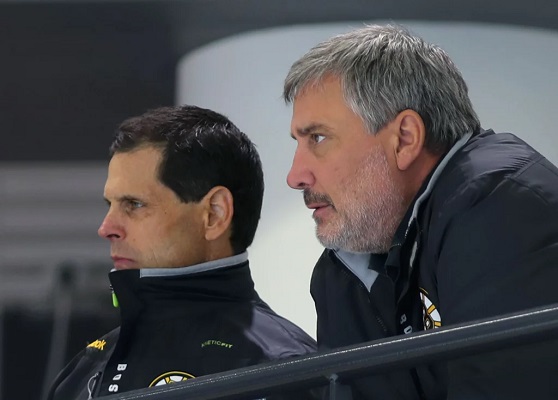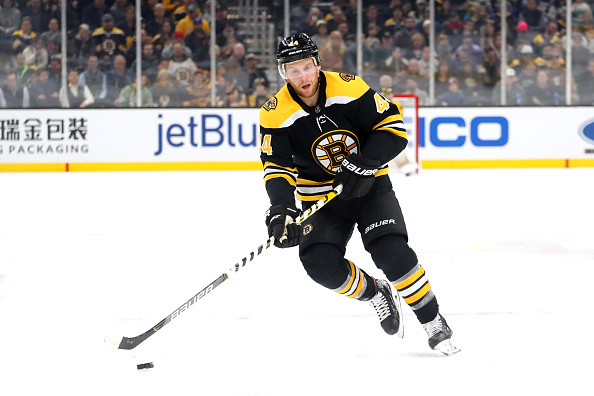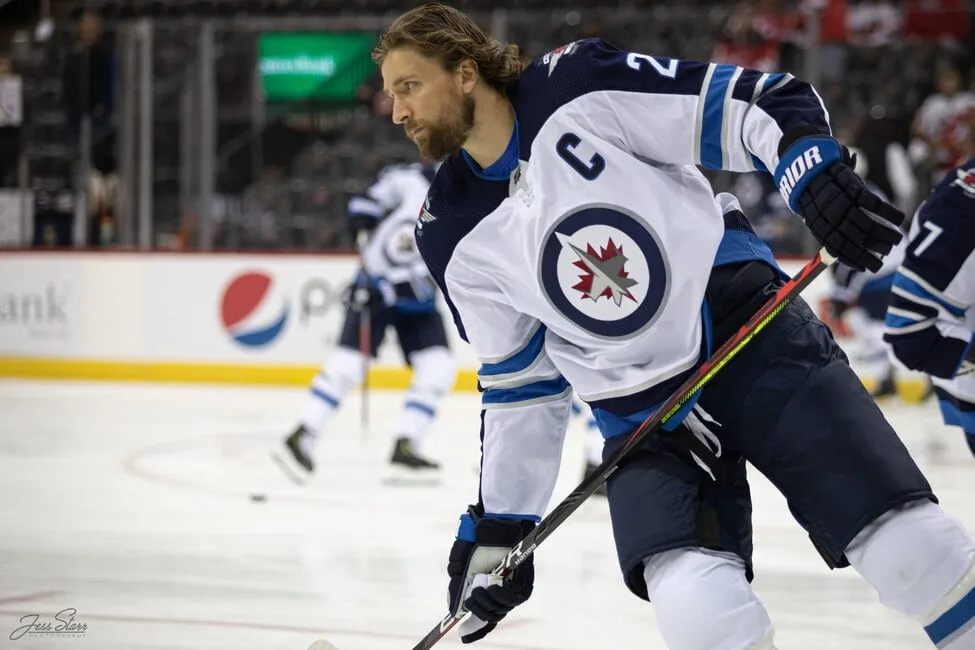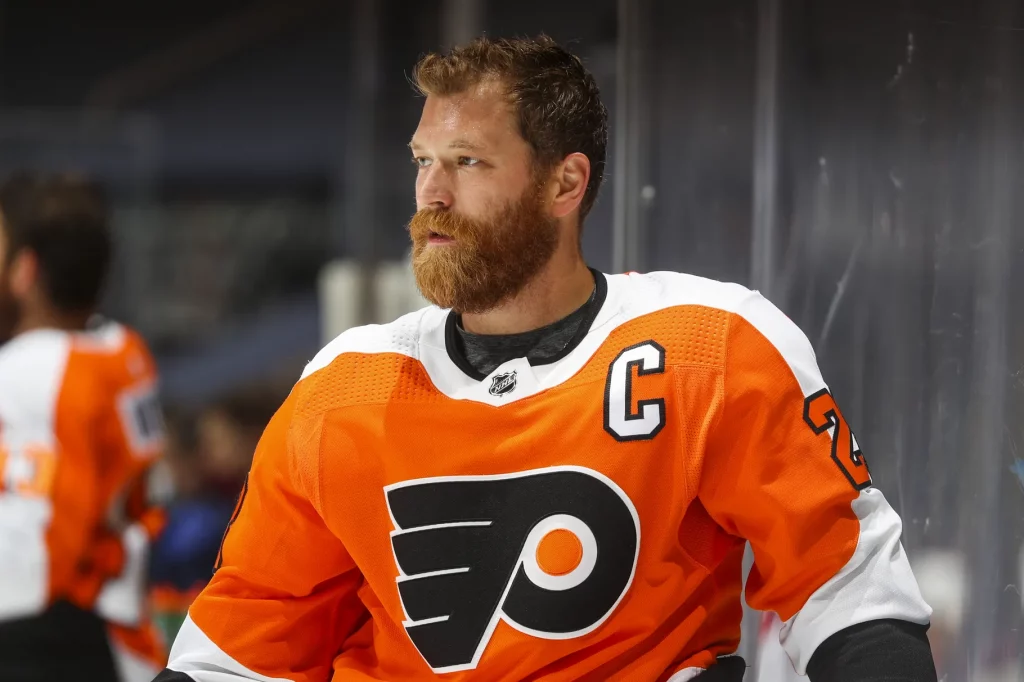
By: Scott Wood | Follow me on Twitter @ScottHoHPodcast
Every year the Bruins are competitive, I find myself considering the 2011 trade deadline and how three simple moves helped take the team from being a good-to-middling club to a legitimate Stanley Cup contender.
I understand that some will look at this with somewhat earned cynicism and claim that it’s not worth it. One could argue that the 2011 Bruins were a different animal. Toughness throughout the lineup. Big, bruising defense. A full roster with no passengers and a team-first mentality that stuck up for one another when physically challenged and ultimately bullied their way to a Cup win. This article isn’t a debate about the current quality of the roster (many others have been) but rather how to efficiently cinch a couple of holes to give this iteration of the Boston Bruins the best chance of succeeding in a post-season that they are most likely headed to.
There were two significant events in 2011 that brought about the strategy of the deadline for Peter Chiarelli.

The Bruins blueline was Chara, Seidenberg, Ference, Mark Stuart, Boychuk, and McQuaid. There is a sort of beauty to that bruising group of six, but what became clear early on in the season was that it was too one-dimensional. That group as a whole had a difficult time skating the puck out of the zone and creating a quick transition. This became abundantly clear after the Bruins recalled young Steven Kampfer from Providence, and his agile skates and ability to push the puck was a massive boost to the team’s success. No one will mistake Kampfer for an NHL superstar, but the effect he had on the Bruins attack was the tipping point for the defense, helping it round out from merely being plodding and heavy to one that could push the pace on the attack.
Seeing the effect that Kampfer had on the roster illuminated how much a player of his skill-set meant to the team. But his status as a rookie made it critical for Chiarelli to add a veteran puck-mover for a playoff run. Tomas Kaberle was acquired to take that spot, and shortly after, Steven Kampfer was sent back down to Providence.
The other significant occurrence was Marc Savard’s inability to regain form after his debilitating concussion in the 2010 season. He was unable to play for the first quarter of the season but struggled in his return, eventually seeing his season ended by another concussion midway through January. The Bruins went from having the hopeful center corps of Krejci, Bergeron, Savard, and Greg Campbell to not having a true answer at center for the third line. This brought about the trade for then-Ottawa Senator Chris Kelly.
The final piece of this puzzle was finding the cap space to make these moves. This came in the form of Blake Wheeler and Mark Stuart being traded for the underpaid Rich Peverley out of Atlanta. Wheeler would, of course, go on to be an NHL superstar and captain of the Winnipeg Jets, while Stuart wore the “A” and played a significant role for another six years. The Thrashers had no reason to trade Peverley, so Chiarelli had to give them one in a deal that would be highly criticized for its lopsidedness if the ending was scripted differently.

On to the present, the identity of the Bruins is a different one. No longer the big and bad, this version of the team is more about puck control, zone entries, speed, and skill. This leads many to believe that the current defense is again too one-dimensional, simply in a direction opposite the one from 2011.
The other hole that many will note is again at center, where Erik Haula is currently the pivot between Taylor Hall and David Pastrnak. This is working but at the expense of the top line. Time will only tell if it stays together or if Pastrnak is again bumped back up to Bergeron’s right when it appears another change is needed.
One can not help but note the similarities between the two seasons and their respective needs. Could a similar philosophy on the trade market again forge a fortunate result? With Bergeron contemplating his future in the NHL and the return of Tuukka Rask (and his generous contract), I can only dread what another 2016-like deadline (JM Liles, Lee Stempniak) would do to the morale of the fan base. Sweeney owes it to this club to do everything he can to get the holes on this team filled before time runs out this season.
So who could be Tomas Kaberle? The Chris Kelly and Peverley? And equally as important, who is the Blake Wheeler, the Mark Stuart, and the Joe Colborne?
For the sake of this exercise, I will only be dealing with teams that, as of the time of writing this, appear to have no clear path to the post-season. Those are the bottom eight clubs in the Eastern Conference (Detroit, Columbus, Philadelphia, New Jersey, the Islanders, Buffalo, Ottawa, and Montreal) and teams in the West with a .500 record or worse (Vancouver, Chicago, Seattle, and Arizona). Notice omissions from this list being San Jose (Tomas Hertl) and the Dallas Stars (John Klingberg), as I suspect those teams will be unwilling to sell as long as there is a realistic shot for either of them to make the post-season.
I will also state that I believe the second line center position to be this year’s Kaberle. The more important need with the biggest associated cost. While the defenseman, in this case, is Kelly, and I’m putting him on the right side, which allows for three pairs, all with shutdown ability.
The Defensemen
I took a look at all teams on the list and found a couple of matches. I know many will point to Klingberg and Chychrun as potential targets here, but there are a couple of things that belie these options. Primarily trading for either of these players does not solve the underlying issue of not having enough players who are capable shut-down defenders. If the cost for either of these high-profile acquisitions is anything like we expect, it would sap the Bruins’ resources while leaving the team with the same fundamental problem it currently sports. A lovely dream, but not really an option.
The first name that popped out to me was the Devils’ Damon Severson. He’s 27, signed through next season at a $4.166M AAV, so not a cinch to be in New Jersey’s long-term plans. He’s the best fit on this list from a player perspective. He blocks a ton of shots, plays a shut-down role, and can even skate. He’d be the closest thing to a Dennis Seidenberg that we’ve seen in Boston since… Dennis Seidenberg.
The problem is, he’s been with the Devils organization since being drafted and currently skates nearly two minutes a game more than any other player on his team. In short, I don’t think the Devils are trading him without significant overpay. One could also look at his teammate PK Subban, but while I don’t hate the idea the way most Bruins fans would want me to, I don’t think he’s necessarily a fit with the role we are trying to fill.
The second name on the list is the New York Islanders Scott Mayfield. In his favor, he currently skates over 20 minutes a game on the Isle, is a big shot-blocker and hitter, and has a big frame at 6’5″ 220lbs. He’s signed to a reasonable deal at just $1.45M/yr for this year and next and seems to check a lot of boxes for the Bruins’ needs. He isn’t, however, the type of player that pushes the pace. He strikes one as being closer to the Mark Tinordi end of the acquisition scale when what we’re looking for is something a little more substantial. I still wouldn’t rule out a trade for Mayfield, but he’s not my first target.
Instead, I’m going with Ottawa’s Artem Zub. He brings a lot of precisely what the Bruins are looking for. He’s another big-time shot-blocker who isn’t afraid to throw the body, a decent skater and puck mover, and better fits the mold of a top-four player that can slide up the lineup in the case of an injury to Carlo or McAvoy. He fits Cassidy’s philosophy of players who push the pace.
Here’s the caveat: like the Thrashers and Rich Peverley, the Senators have no reason to move him. Zub is at a $2.5M/yr contract through 2022-23 and is a UFA at the end of that. But he’s still young and could be a part of the Senators for a long time. So the cost will have to reflect that. My proposal: Artem Zub for Jack Studnicka, Connor Clifton, and a Second-Round pick in 2022. Clifton gives them a bit of what they’re missing in Zub, is signed for cheaper($1M/yr for the next two seasons), Studnicka gives them a big center who could contribute right away, while the pick is high enough in the draft that they could justify letting a player like Zub go.
The Center
The Center position was the most difficult one. In looking over teams on my list, there simply wasn’t a lot that fit the bill. Some will mention Max Domi, but I’m hesitant to believe that he would provide more in that second-line role than Charlie Coyle. At a $5.3M AAV, I think Domi heads elsewhere. Likely to the team that loses out on my target:
Philadelphia Flyer Claude Giroux. People know this name already, and he’s been in numerous proposals as a Bruins target. Not much need be said about him. The one thing is his $8.275 cap hit, which will have to see retention from the Flyers to make it work (which, to be fair, would likely be the case for any contending team looking to acquire him). My proposal is Giroux for a 2022 First Round Pick, a 2023 Third Round pick, and forward Oskar Steen.

The Cap Space
My final proposal deals with both Jake DeBrusk’s trade request and is an effort to free up a little bit of cap room in order to make these deals work. Bruins Assistant GM Evan Gold has done a fantastic job in keeping the Bruins cap space plentiful during trying times, but with injuries and call-ups, they’ve fluctuated wildly from having just over $8 million in cap space at the deadline to (at the time of writing this) just over $2 million.
To help ease this deadline, I propose a trade of Jake DeBrusk and a Fourth Round pick to the Red Wings for a Second Round pick in 2023 and forward Sam Gagner ($850 000). The deal would free up nearly $3 million in AAV for the Bruins deadline and adds just a touch of right-handed veteran depth at center or wing for the playoffs. Jake DeBrusk becomes our Blake Wheeler.
Marchand – Bergeron – Smith
Hall – Giroux – Pastrnak
Haula – Coyle – Foligno
Blidh – Nosek – Lazar
Gagner, Frederic
Grzelcyk – McAvoy
Reilly – Carlo
Forbort – Zub
Vaakanainen, Moore
Rask
Ullmark
Swayman
I know people may bemoan the cost or the lack of seeing a Chychrun or Klingberg on this list. Some will claim that this isn’t the time to be moving picks as the Bruins have to look to a rebuild. Some will say this doesn’t do enough to toughen the team for playoffs. But I believe this well-rounded deep roster would give the Bruins the best chance at a Cup in 2022. It would replicate the magic that Peter Chiarelli pulled out of his hat in 2011.


Leave a Reply